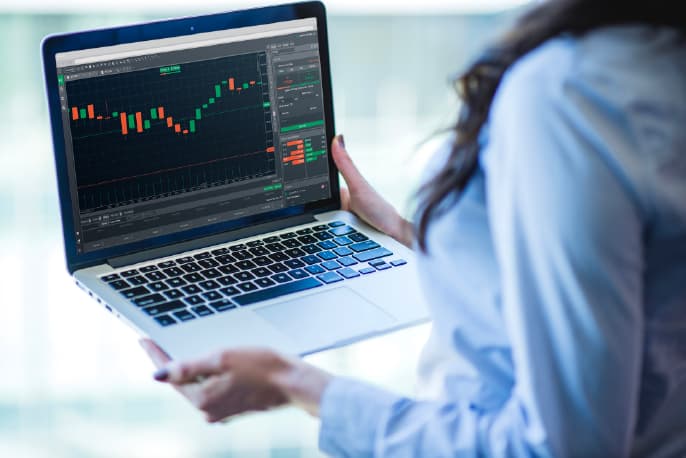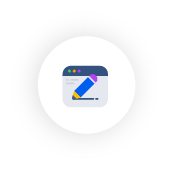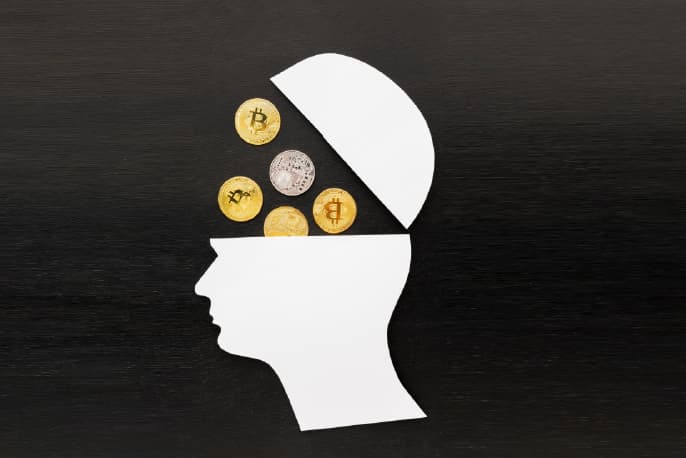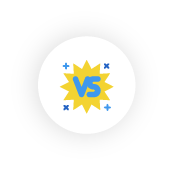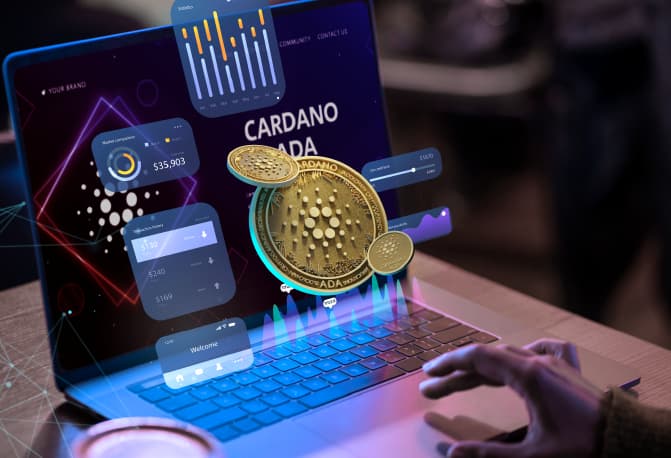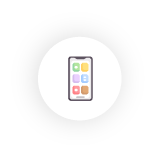What are NFTs?
How do they work?
Why does everyone seem to be buying or selling them?
This blog post will explain the NFT craze in the simplest way possible.
We will not confuse you with super deep technical depth, such as gas fees or residual taxation.
Instead, we will explain the basic concept using relatable real-world scenarios so you can finally wrap your head around something that really is quite confusing.
Table Of Contents:
Fungibility Explained
NFT stands for Non-Fungible Token.
But what exactly is “Fungible”?
Well, you can think of something that is fungible as interchangeable or as having no unique properties.
If I offer you a one-dollar bill in trade for a different one-dollar bill, you should have no trouble with it because they are two of the same thing.
Both bills are fungible, which means they may be interchanged for one another.
A dollar bill is a fungible object — meaning it’s easy to trade one for another with no issue.
However, if you happen to have a special $1 note that has unique markings or even just numbers like “87654321”, then you should think carefully before trading it
Because these one-dollar bills are scarce and can be traded for up to $5,000 dollars or more.
In other words, these bills are non-fungible.
What Is A Non-Fungible Token?
Non-Fungible Tokens are unique and have specific attributes that distinguish them from the rest of the bills.
A non-fungible token is like the one-of-a-kind dollar bill described earlier.
It’s a cryptocurrency with special characteristics.
Cryptocurrencies like Bitcoin are considered non-fungible because they can have a specific history attached to them.
So NFTs are basically unique coins, but what are they used for?
NFTs Explained
Consider NFTs to be the digital version of righthand signatures.
They allow you to verify your ownership of a specific file or certificate to prove the authenticity of something else, in this case, an asset on Ethereum’s network.
Confused?
Don’t worry, let’s break it down.
For example, the original painting is always more valuable than its copies.
And there are ways to authenticate the painting’s legitimacy, including obtaining a certificate of authenticity.
But how can you tell what’s original with a digital file?
How will you know which is a copy of the original?
And does it even matter?
Well, it does matter.
For centuries, collecting physical art has been a popular pastime, but digital goods are becoming increasingly sought-after.
For instance, we can write an eBook and sell the first copy as an NFT.
Whoever buys it from us will have the right to say that they own the first-ever copy of our book.
But here is where it gets tricky.
You see, it’s not that we gave the buyer any rights to our book, or anything tangible for that matter.
We only gave the buyer the right to brag that they own the first copy.
So unlike buying a painting in real life and taking it home, for example, with an NFT, you don’t have any power over the goods you’re buying.
Some have questioned the concept of an NFT.
And this is because the value depends entirely on who you ask.
And one of the most challenging things to comprehend is something that doesn’t exist in your real world.
Now, let’s talk about how an NFT is created.
NFT Creation

Let’s say someone creates a digital good.
This digital good could be an image, a video, a tweet, a website or anything else that lives in the online world.
The creator then creates a coin, or a token, on a blockchain that supports smart contracts like Ethereum, Cardano or Solana.
This token holds information about the digital goods being sold.
This information includes the token name, the token symbol and a unique hash that proves the authenticity of the NFT.
Remember that the digital goods themselves aren’t stored inside the token, only attributes relating to them.
So while the NFT may point to where the file can be found online, anyone can use that link, and it’s not unique in any way.
Once the token is created, the creator can sell it to someone else, who will be the new owner of that digital good.
To sum it up, an NFT is a token on a blockchain that acts as a digital certificate of authenticity.
It can be verified instantly and show its previous ownership history.
What Are The Characteristics of an NFT?
NFTs provide a new way for people to store and exchange digital assets.
They’re divisible and readily transportable, which makes them perfect as an alternative currency system that can be traded on cryptocurrency markets.
It won’t matter if one person has two copies because only their original belongs to them!
This means that NFT creators can decide that royalties will be paid to them each time an NFT changes hands.
And unlike other types of cryptocurrencies that might get hacked due to vulnerable networks, NFT’s security comes from being entirely disconnected.
Meaning there isn’t any risk associated with sending transactions across blockchains.
NFTs are also commonly used in game design where each individual item has its own identity within the world you’ve created.
NFT Examples
Some examples of popular NFTs include cryptopunks — a collection of 10,000 8-bit style pixel art images of well… punks that are sold as NFTs.
And their price has already surpassed several millions of dollars.
Another example is NBA Top Shot — a marketplace where fans can trade NFTs of NBA moments.
These moments are video clips packaged as an NFT, a bit like the trading cards we used to have back in the day.
Using NFTs for sports highlights is another way players can make money by getting royalties when a Top Shot moment that they are highlighted in gets sold as an NFT.
Additional famous examples include Jack Dorsey, the founder of Twitter, selling his first-ever Tweet as an NFT.
And the artist Beeple is selling an NFT of his work for 69 million dollars.
Buying An NFT

Let’s get right down to it and apply the principles we’ve covered.
How do you buy an NFT?
There are two types of NFT marketplaces — centralized and decentralized.
The centralized marketplaces allow you to sign up and fund your account using a credit card or other form of payment.
For example, Nifty Gateway is a centralized NFT marketplace owned by the crypto exchange Gemini.
There, you can buy NFTs using your Gemini balance.
On the other hand, if you want to make NFT purchases through a decentralized marketplace, you’ll need a crypto wallet that’s compatible with the blockchain your NFT was created on.
For example, in Ethereum’s case, MetaMask is the most popular option.
It’s a wallet built as a browser extension, and you can use it to log into decentralized NFT marketplaces such as OpenSea, Rarible or SuperRare.
We’ll leave links to all of these marketplaces and MetaMask in the description below.
You can now buy or bid on different NFTs in the marketplace once you’ve funded your account or wallet.
In the end, an NFT is simply a cryptocurrency or token that is stored in your wallet in the same way as any other crypto.
Selling An NFT
Keep in mind that unless you’re a serious collector, you’ll eventually need to sell the NFT. Because NFTs aren’t very liquid, this may be an issue.
The truth is, they don’t always have a market of consumers looking to purchase.
Similar to how finding someone who’ll pay thousands of dollars for a rare baseball or Pokemon card might be difficult.
This market is hype-driven, to say the least.
It’s possible that a person purchases an NFT for millions of dollars, only to discover that he won’t be able to sell it later because the interest in that particular NFT has vanished.
NFT Uses
So, now we come to the question: if an NFT merely claims ownership of a digital file, what can you do with NFTs?
Well, many people find an innovative way to display it.
Some NFTs, for example, are shown digitally in art galleries.
Another fun idea is to use a digital frame that can display the NFT and mount it in your home living room.
Alternatively, you can use a real print of the NFT with a QR code next to it to indicate proof of ownership on the blockchain.
There are also online galleries where NFT collections can be viewed.
The possibilities for showing your latest digital work are virtually endless.
But NFTs aren’t only used for art.
An NFT can represent anything that is unusual or requires proof of ownership.
An NFT, in its simplest form, is a label for tagging something in the digital world as yours.
The potential uses for NFTs stretch far beyond cryptocurrency and the blockchain. Anything that needs to be labeled can benefit from NFT technology.
Decentraland, for example, is a virtual world where users can buy digital land.
Digital land can then be used for advertising or simply sold.
NFTs can be used in online games to prove ownership of rare digital items, allowing gamers to trade them with one another.
Domain name registrars are using NFTs to establish ownership of domain names. NFTs can also be used as collateral in DeFi rather than other crypto tokens.
In the real world, it’s like pawning your own item in order to obtain a loan.
The NFT market is one example of a marketplace for NFT-collateralized loans.
The possibilities seem to go on and on.
Will NFTs Be Just Another Bubble?
So are NFTs the next big thing, or are they just a craze like the 2017 ICO mania?
It’s hard to say.
On one hand, it seems like everybody’s talking about NFTs, and all the big companies are moving into this space.
On the other hand, it’s hard to wrap your head around the concept of people paying millions of dollars for digital proof of ownership without any claim in the real world.
I guess only time will tell what the future holds for NFTs.
Hopefully, by now, you know what NFTs are — cryptocurrency tokens that provide proof of ownership for a digital item.






